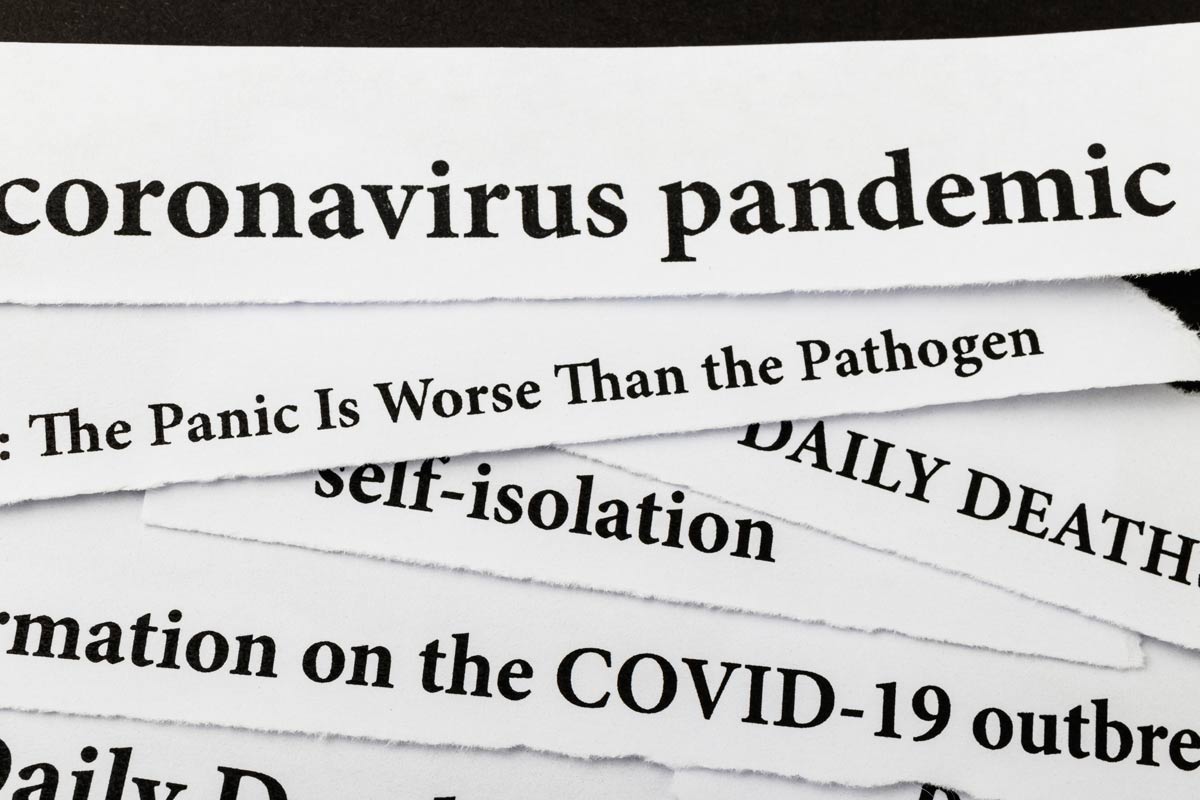
Classroom connection: COVID-19 spurs Xenophobia and racism
Xenophobic incidents, racism and attacks against Asian Americans — based on false narratives that COVID-19 came from the “other” — are sadly predictable, says Roy Peter Clark, senior scholar at the Poynter Institute, a journalism education and advocacy organization in St. Petersburg, Florida.
“Here is how the contagion of irrationality works,” he wrote in an April 13 column. “Someone blames it on China. By extension, the blame extends to the Chinese people. In a diverse country like America, blame — by pure ignorance — is extended to Chinese Americans (many who have never been in China); and because the ignorant do not discriminate between the varieties of Asian cultures, blame extends to all Asian Americans.”
It’s a view shared by Russell Jeung, chair of the Asian American Studies Department at San Francisco State University. In an interview with Columbia Journalism Review published on April 14, he discussed the role of news organizations in reducing such attacks — by, for example, providing broader coverage of Asian Americans and using accurate terms (such as “COVID-19” instead of “the Chinese virus”). Having reporters who are culturally sensitive and can communicate in communities where English may not be widely spoken can also help, he said.
Xenophobia and racism
Jeung and his graduate students have analyzed xenophobia and discrimination in COVID-19 news coverage, and he has helped to collect firsthand accounts of anti-Asian violence. Among the patterns they saw in global English-language news reports about the pandemic were these: First came racialized memes about eating Chinese food (including eating bats, which were a possible source of the coronavirus) and wearing masks (a common sight in Asian countries during flu season). Those were followed by reports on cancellations of Lunar New Year events and the decline of Chinese businesses. Next came worldwide reports about racism against Asians.
Speaking out
Media outlets “could be contributing to the xenophobia by calling the virus the ‘Chinese virus,’ calling it the ‘Wuhan virus,’ by showing pictures of Chinese people wearing masks when they’re talking about the virus, or running stories about conspiracy theories,” Jeung told CJR. (The Jan. 27 issue of The Sift referred to COVID-19 as the “Wuhan coronavirus”; other news organizations used the same language around that time.)
But when he and his students looked solely at U.S. domestic news coverage, those anti-Asian patterns were followed by reports on elected officials, health officials and Asian Americans themselves speaking out against racism and condemning harassment and violence. Such reports, he suggested, may have been partially responsible for President Donald Trump’s tweets on March 23 that Asian Americans should be protected and that the spread of the virus was not their fault.
Still, Jeung added, Trump has “a clear ‘us’-versus-‘them’ dichotomy. We call that Orientalist language, saying that the West is different from the East. Therefore Asian Americans are considered perpetual foreigners. That language puts us in the out-group, and it’s easy to blame and attack the out-group.”
Related reading
- “’A Perfect Storm’: Extremists Look For Ways To Exploit Coronavirus Pandemic” (Hannah Allam, NPR).
- “Racism is a virus too” (Nancy Spiegel and Tam Huynh, Bangor Daily News).
- “Political correctness is a virus that kills, too: John Phillips” (John Phillips, Orange County Register).
For discussion
How could associating COVID-19 with a geographic location contribute to xenophobic and discriminatory attitudes? In what ways would having a culturally and linguistically diverse newsroom staff be helpful in covering the COVID-19 pandemic? How would you rate your local news organizations’ coverage of COVID-19 as it reflects and relates to the Asian American community? How would you rate national news coverage?
Another idea
Have students review COVID-19 coverage relating to Asians and Asian Americans since January from one standards-based news organization. Then have students summarize their findings, including whether terms such as “Chinese virus” or “Wuhan virus” were used, whether any photos of Asians or Asian Americans wearing masks were used without appropriate context, and whether reports included first-person accounts from Asian Americans about how they have been affected by the spread of COVID-19 and the racial perceptions of others.